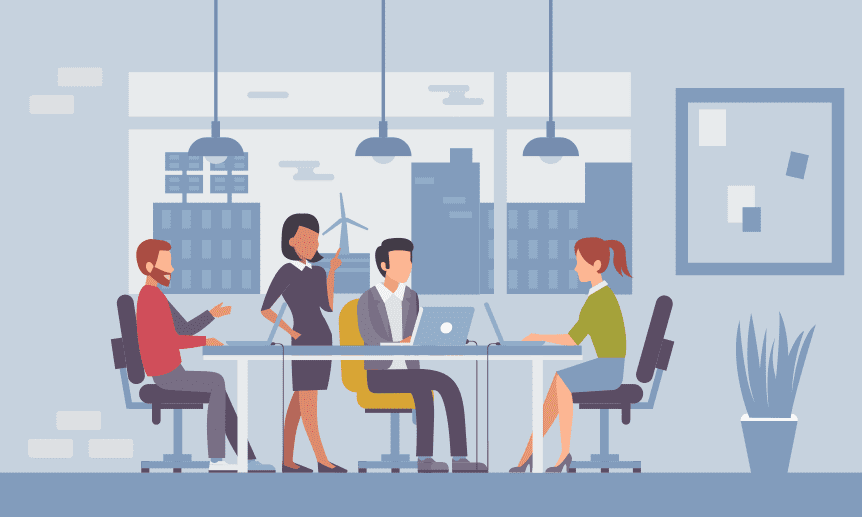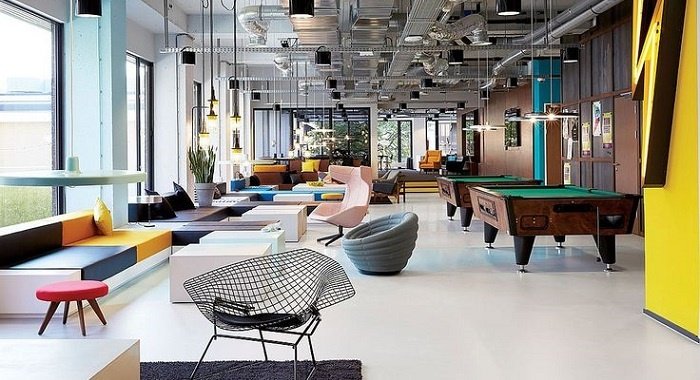Have you experienced a boost in your productivity when you sat at a particular place? Do you have a special corner of your house, room or office where you see your creativity on a boost? Certain rooms or spaces have a special effect on us, the users.
In reality, we often overlook the effect of our surroundings on us. Workplaces is where we spend most of our day and are expected to be productive. But, what we often fail to notice is, does our office intimidate us? Is it boosting my creativity or productivity?
Workplace design refers to the process of designing and organizing a workplace to optimize worker performance and safety. Workplaces’ design have come a long way in history. Offices were first created in the 18th century. From rigid, regimented office layout where workers sad in endless rows of desks, to sitting in small cubicles for 8 hours a day.
Companies and firms have been working to improve the environment of their workplaces as it not only optimizes the brand value of their organisation but primarily maintain a productive environment for its employees.
The head of marketing for Morgan Lovell, a leading office interior designer, Paul Kelly stated that a well designed office might cost a little more, but it is much cheaper than a poorly designed one. A non-functioning office can waste time and cause frustration among employees, because it can hinder basic tasks.
Thus, here are some tips on how to make your office a great workplace.
Plan and Layout
Essentially, the plan of your office should support your business culture and goals. It should facilitate the values of your work. Therefore, if your business is built around teamwork, consider open spaces where people can gather, like a conference room for large meetings or a kitchen big enough so people can talk or eat together.The space should be flexible and non restrictive. The layout of your office should increase productivity. There are three types of layout based on the required work environment.

- Open: to encourage communication and collaboration, large open rooms with tables or low-level cubicles
- Cellular: for noiseless surroundings or are dealing with confidential information, individual offices for all employees separated by walls or partitions.
- Activity-based: to meet the needs of assignments tasked to employees, , activity-based is a cross between open and cellular layouts. It’s a mix of open, semi-private, and closed spaces.
Comfortable Furniture
The quality and comfort of furniture has an impact on its users productivity. Companies sometimes in order to save money compromise in the quality of furniture. But, as the employees spent a large number of hours using them, they tend to suffer.
A bad chair can cause back pain, a flickering monitor can irritate eyes and cause neck pain, improper desks and cabinets can result in disorganized document stacks and stationery.Effective Lighting
Natural light is the best source of light, as it increase productivity and creativity significantly. It has been proven that natural light has a positive impact on humans. However, not always is it possible for spaces to be naturally lit. Due to bad planning or the type of work, people have to rely on artificial lighting.
In such sealed and enclosed work spaces with no windows or ventilation, effective lighting arrangements have to made to perk up employee moods and not make them feel drowsy at work, this affects productive outcomes.
For instance, in an office where a computer is used so often, it is essential to have a quality amount of light so as to relieve the effect of the brightness of the computer screen on the eyes of the workers.
Break rooms

- Break time or lunch time is crucial for every employee. The importance of a proper break from work is understood to every individual employer but what is often ignored is the requirement of a proper break or refreshment room.
Moreover, design of these rooms is as important as any other room. They should provide a comfortable environment for the employers to have a casual conversation or take a break from work.
Adding games and sports in these rooms can provide a healthy break to the employees as it gives them the opportunity to take their mind of work and rest. Room Fresheners
Often, our olfactory sense has a role to play in our concentration and creativity. Scents have the power to influence your mood and make you feel comfortable in an environment.
Some of these fragrances could help perk up employee moods and help them achieve their targets at work:
- Cinnamon fragrance improves focus
- Pine increases alertness
- Lavender helps to relax
- Citrus wakes you up and lifts your spirit
- Peppermint lifts up your mood
Bringing the outside – inside
Nature has a very positive impact on us. They calm our sense and reduce stress levels. Adding plants inside the office or using table top plants can be beneficial to the mental and physical health of the employers.
Furthermore, providing views of nature has a significant impact on the users and calms the human body.
In conclusion, the backbone of a good design is the user experience. Design of offices should be in accordance to the comfort of the employees as they tend to spend a remarkable amount of time there.



